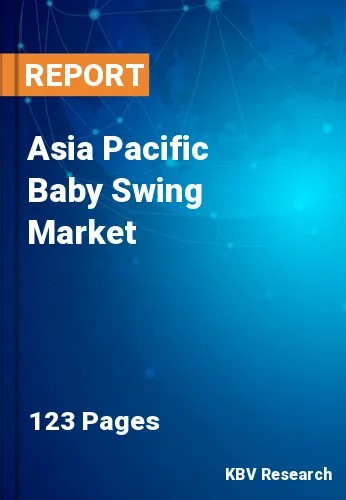The Asia Pacific Baby Swing Market would witness market growth of 13.4% CAGR during the forecast period (2024-2031). In the year 2022, the Asia Pacific market's volume surged to 30,752.6 thousand units, showcasing a growth of 14.4% (2020-2023).
Hospitals represent a specialized application where baby swings play a crucial role in providing comfort and soothing for newborns and infants, particularly those in neonatal units or undergoing post-operative care. Hospitals utilize baby swings designed with enhanced safety features and medical-grade materials to ensure the well-being of vulnerable infants. These swings often incorporate gentle rocking motions that mimic the natural movements babies experience in the womb, promoting relaxation and helping to regulate sleep patterns. Thus, in China, 2,834.3 thousand units of baby swings are expected to be utilized in hospitals by the year 2031.

The China market dominated the Asia Pacific Baby Swing Market by Country in 2023, and would continue to be a dominant market till 2031; thereby, achieving a market value of $1,362.2 Million by 2031. The Japan market is registering a CAGR of 12.7% during (2024 - 2031). Additionally, The India market would obtain a CAGR of 14.1% during (2024 - 2031).
The fast-paced modern lifestyle, with more parents juggling work and childcare, has led to increased adoption of baby swings. These devices offer a convenient solution for keeping babies entertained and soothed, allowing parents to manage their time more effectively. The rise in single-parent households has contributed to the adoption of baby swings. Single parents often require additional support to balance childcare and other responsibilities, and baby swings provide a reliable option for calming and entertaining infants.
In cultures or regions where extended family living arrangements are common, baby swings are adopted as communal tools that multiple caregivers can use to soothe and care for infants, facilitating shared childcare responsibilities. Increased awareness and education on the importance of early childhood development have led parents to seek products that support sensory and cognitive growth. With their multi-sensory stimulation features, baby swings are increasingly adopted as part of this developmental toolkit.
The convenience of online shopping is a significant factor driving the demand for baby swings. Chinese parents often juggle work and family responsibilities and are increasingly seeking time-saving solutions. E-commerce platforms enable them to browse, compare, and purchase baby swings from the comfort of their homes, often with the added benefit of home delivery. This ease of access particularly appeals to working parents who value products that offer functionality and convenience. Furthermore, many online retailers provide detailed product descriptions, customer reviews, and ratings, empowering parents to make informed purchasing decisions. Thus, rising disposable income and increasing online sales in the region drive the market's growth.
Free Valuable Insights: The Global Baby Swing Market is Predict to reach USD 12.7 Billion by 2031, at a CAGR of 12.9%
Based on Type, the market is segmented into Manual Baby Swing and Electric Baby Swing. Based on Application, the market is segmented into Household, Nursery, Hospitals, and Other Applications. Based on Distribution Channel, the market is segmented into Offline and Online. Based on countries, the market is segmented into China, Japan, India, South Korea, Australia, Malaysia, and Rest of Asia Pacific.
By Type (Volume, Thousand Units, USD Billion, 2020-2031)
By Application (Volume, Thousand Units, USD Billion, 2020-2031)
By Distribution Channel (Volume, Thousand Units, USD Billion, 2020-2031)
By Country (Volume, Thousand Units, USD Billion, 2020-2031)
Our team of dedicated experts can provide you with attractive expansion opportunities for your business.

